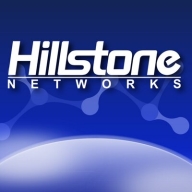

Find out what your peers are saying about Darktrace, Vectra AI, Trend Micro and others in Network Detection and Response (NDR).
| Product | Market Share (%) |
|---|---|
| Arista NDR | 3.9% |
| Darktrace | 22.3% |
| Vectra AI | 15.6% |
| Other | 58.2% |
| Product | Market Share (%) |
|---|---|
| Hillstone S-Series Network Intrusion Prevention System | 1.0% |
| Fortinet FortiGate | 16.6% |
| Darktrace | 13.8% |
| Other | 68.6% |
| Company Size | Count |
|---|---|
| Small Business | 5 |
| Midsize Enterprise | 2 |
| Large Enterprise | 7 |
Arista NDR (formerly Awake Security) is the only advanced network detection and response company that delivers answers, not alerts. By combining artificial intelligence with human expertise, Arista NDR hunts for both insider and external attacker behaviors, while providing autonomous triage and response with full forensics across traditional, IoT, and cloud networks. Arista NDR delivers continuous diagnostics for the entire enterprise threat landscape, processes countless network data points, senses abnormalities or threats, and reacts if necessary—all in a matter of seconds. The Arista NDP platform stands out from traditional security because it is designed to mimic the human brain. It recognizes malicious intent and learns over time, giving defenders greater visibility and insight into what threats exist and how to respond to them.
The Advent of Advanced Network Detection and Response & Why it Matters
Hillstone Network-based IPS (NIPS) appliance operates in-line, and at wire speed, performing deep packet inspection, and assembling inspection of all network traffic. It also applies rules based on several methodologies, including protocol anomaly analysis and signature analysis to block threats. Hillstone NIPS can be deployed in the network to inspect traffic left undetected by perimeter solutions, and is an integral part of network security systems for its high-performance, no compromise, best-of-breed protection capability and broad and flexible deployment scenarios.
We monitor all Network Detection and Response (NDR) reviews to prevent fraudulent reviews and keep review quality high. We do not post reviews by company employees or direct competitors. We validate each review for authenticity via cross-reference with LinkedIn, and personal follow-up with the reviewer when necessary.